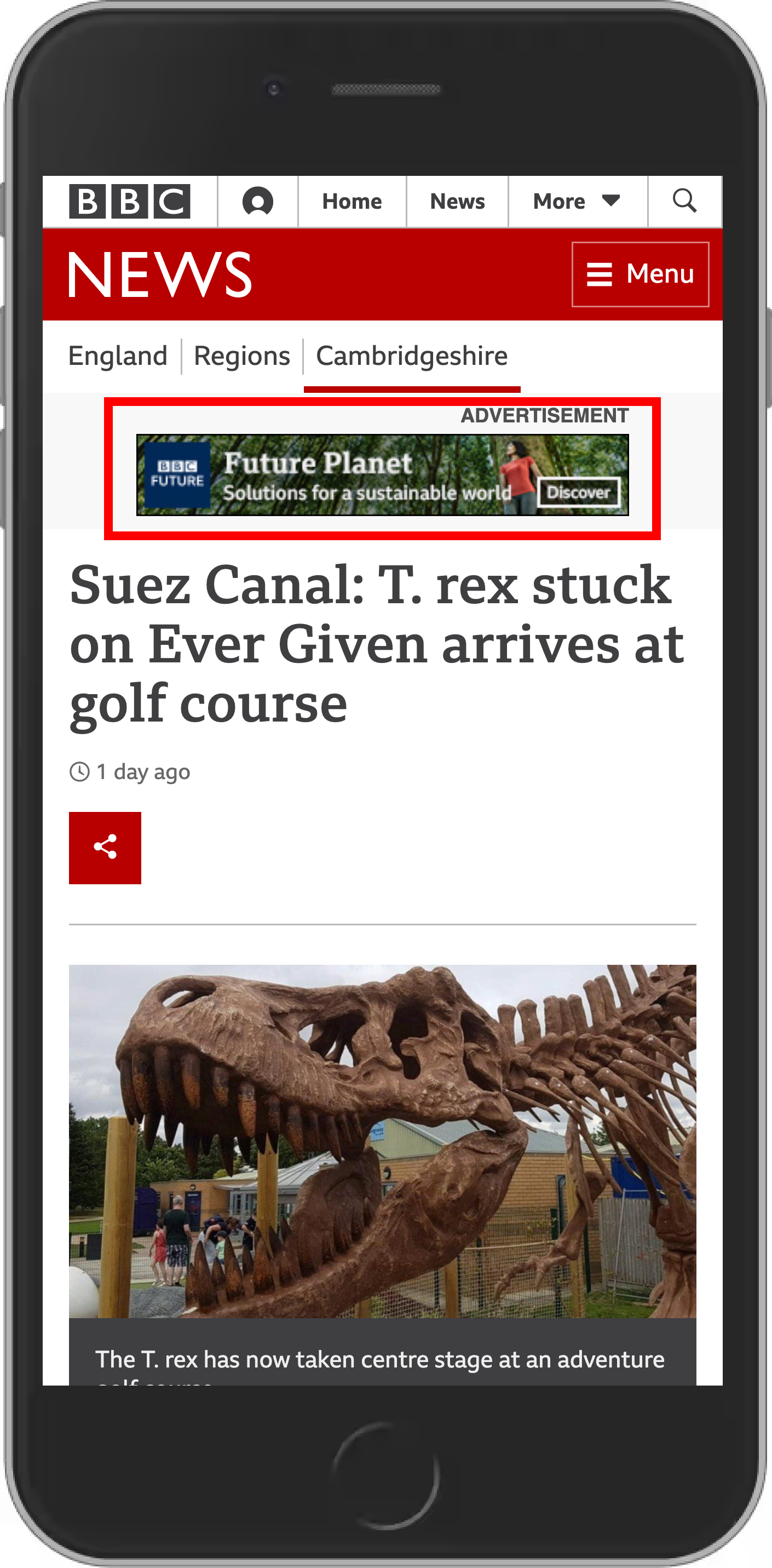5 reasons to use bumper ads to succeed in your video campaigns
01 March, 2022
5 mins
Have you ever wanted to send a message to someone without being too heavy or boring? You didn't manage to find the right words or ...
Read more
Stay tuned thanks to our Newsletter
They are often misunderstood and used interchangeably. Yet, the two formats have their own functionalities and specificities. If you want to know more about native advertising and display advertising, and how each format should help your business, you should read this article.
Also called banner ads, display ads used to take place on commercial messages imposed on the user’ experience. You can find display ads on YouTube’ advertising breaks, while checking your email or using apps that allow banner ads.
Banner ads were first released at the beginning of the 2000s’ and now proliferate on web pages. If Display ads used to be boring and hard to edit, advertisers can now include text, images or videos to make them more attractive.

Native ads on the other hand take place on a webpage inside the site’s content. For instance, you can find native advertising on websites that include paid content posts. Native ads are also an advertising technique that is much used on social media such as Twitter and Facebook.
It aims at being included naturally on web pages so that you can’t define if it is an ad or just simple content. It blends in the website to increase the chances a user gets to click on it.

If both can help you advertise your products and services, you may be interested in knowing how they differ to choose the format that best suits your marketing needs. These figures should help you differentiate these formats:
For all that, you should not abandon display ads. For instance, if you want your ads to be displayed on many websites that do not have a standardized page format, you may prefer display ads as they can adapt to every website. This advertisement format is also really beneficial if your campaign is focused on retargeting, as you make sure to share a straightforward message with your audience.
Many brands use both formats to make the most of their marketing strategy. But it is not always the best solution to split your efforts. If you want to launch an effective advertising campaign, you have to define your objectives first.
Think about your KPIs; what do you need? Do you want to build strong brand awareness? Attract more customers? Advertise on as many websites as possible? Well, know that:
Native ads blend into the page content and offer a great UX. Those ads are considered to offer a higher CTR for they are less intrusive.
They are also more popular and more engaging. According to Facebook’s Audience Network, in 2020, consumers will interact with native advertisements 20 to 60% more than they do with display advertisements. But, too many native ads on the same page can make your audience leave the webpage as it appears crowded and dilute the content.
Display advertisement is helpful to boost your brand’s awareness as it intends to draw your audience’ attention to the ads.
According to the Interactive Advertising Bureau, display ads increase your brand awareness by 21%. It is very useful for remarketing campaigns as a well-placed display ad is an excellent reminder of a purchase intention. But still, pop-ads can be intrusive or make people leave a webpage if it bothers their reading of the content. Use it wisely!
Native ads and display ads are two engaging formats of advertising. The display format is well-known but tends to be more and more replaced by the native format as it is less intrusive.
Depending on your objectives, you may prefer a format or the other. There is no best format, but note that users use to prefer native ads. They are less distracted while they read through a page or scroll their social media feed.
Launching an impactful ad campaign can be time-consuming and overwhelming. If you need to be advised on your ad strategy, you can call upon our dedicated team.
By Emma Jeanpierre
24 Feb, 2022